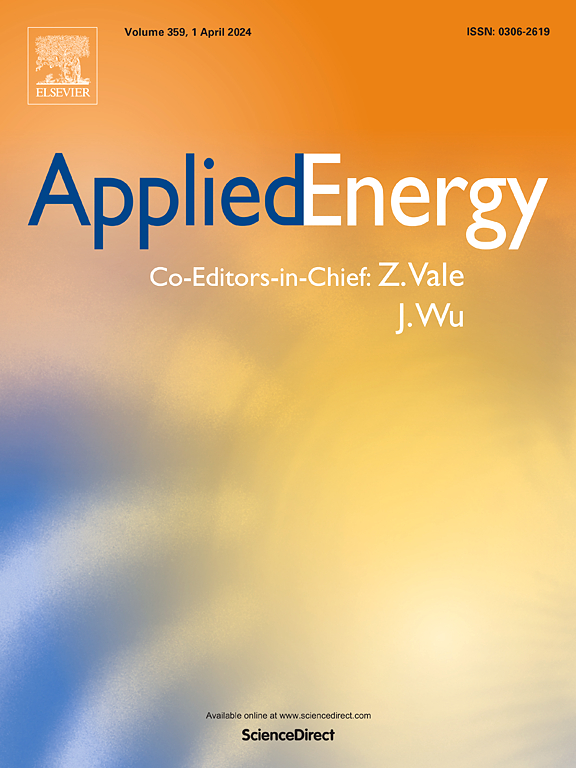Passive thermal management of CO2 Methanation using phase change material with high thermal conductivity
IF 10.1
1区 工程技术
Q1 ENERGY & FUELS
引用次数: 0
Abstract
CO2 methanation is a promising technology for fuel decarbonization. Since methanation is an exothermic reaction, thermal management of the reactor is an important issue. This study investigated the effect of applying metallic phase change material(PCM) for reactor thermal management. In this study, Zn-30 %Al alloy(melting point: 429–509 °C)-based PCM composites were mixed with catalysts in a bench scale reactor, then steady-state and transient methanation were examined. The results at steady state indicated peak temperature was reduced from 464 °C to 411 °C compared to conventional single-catalyst condition. This corresponded to 38 % reduction in the temperature difference between peak and base temperature. Furthermore, temperature distribution in the whole reactor was homogenized, achieving a dispersion of the local thermal stress. This was due to high thermal conductivity of metallic PCM. Then, transient thermal management of PCM was evaluated. Periods for temperature increase between 430 and 450 °C, including PCM melting point, was prolonged 45 min compared to the condition without PCM. This resulted 71 % suppression of exothermic speed. This was due to complex effects of latent heat and high thermal conductivity of metallic PCM, offering thermal buffer in case of catalyst thermal runaway. These results showed the introduction of metallic PCM into methanation reactor provides novel thermal management.
采用高导热性相变材料的CO2甲烷化被动热管理
二氧化碳甲烷化是一种很有前途的燃料脱碳技术。由于甲烷化是一个放热反应,因此反应器的热管理是一个重要的问题。研究了金属相变材料在反应堆热管理中的应用效果。在实验反应器中,将zn - 30%铝合金(熔点429-509℃)基PCM复合材料与催化剂混合,研究了稳态和瞬态甲烷化反应。结果表明,在稳态条件下,与传统的单催化剂条件相比,峰值温度从464℃降至411℃。这相当于峰值温度和基础温度之间的温差减少了38%。此外,整个反应器内的温度分布均质化,实现了局部热应力的分散。这是由于金属PCM的高导热性。然后,对PCM的瞬态热管理进行了评价。与没有PCM的情况相比,430至450°C之间的温度升高周期(包括PCM熔点)延长了45分钟。这导致71%的放热速度被抑制。这是由于金属PCM的潜热和高导热的复杂影响,在催化剂热失控的情况下提供热缓冲。结果表明,在甲烷化反应器中引入金属PCM提供了一种新的热管理方法。
本文章由计算机程序翻译,如有差异,请以英文原文为准。
求助全文
约1分钟内获得全文
求助全文
来源期刊

Applied Energy
工程技术-工程:化工
CiteScore
21.20
自引率
10.70%
发文量
1830
审稿时长
41 days
期刊介绍:
Applied Energy serves as a platform for sharing innovations, research, development, and demonstrations in energy conversion, conservation, and sustainable energy systems. The journal covers topics such as optimal energy resource use, environmental pollutant mitigation, and energy process analysis. It welcomes original papers, review articles, technical notes, and letters to the editor. Authors are encouraged to submit manuscripts that bridge the gap between research, development, and implementation. The journal addresses a wide spectrum of topics, including fossil and renewable energy technologies, energy economics, and environmental impacts. Applied Energy also explores modeling and forecasting, conservation strategies, and the social and economic implications of energy policies, including climate change mitigation. It is complemented by the open-access journal Advances in Applied Energy.
 求助内容:
求助内容: 应助结果提醒方式:
应助结果提醒方式:


